Nickname(s) Graf Punski Name Walter Krupinski | Battles/wars World War II Years of service 1940–451957–76 | |
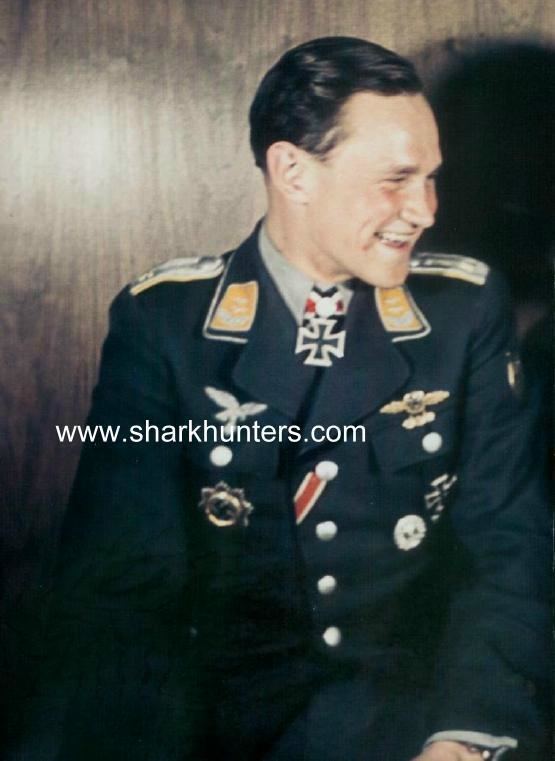 | ||
Born 11 November 1920Domnau, East Prussia ( 1920-11-11 ) Commands held Jagdgeschwader 52, Taktisches Luftwaffengeschwader 33 | ||
Walter Krupinski (11 November 1920 – 7 October 2000) was a German Luftwaffe fighter ace in World War II and a senior West German Air Force officer during the Cold War. He was one of the highest-scoring pilots in the war, credited with 197 victories in 1,100 sorties. He was called by his fellow pilots Graf Punski (Count Punski) due to his Prussian origins. Krupinski was one of the first to fly the Messerschmitt Me 262 jet fighter in combat as a member of Jagdverband 44 led by Adolf Galland.
Contents
- Bos season 2 episode 16 jv44 april 2 1945 hauptmann walter krupinski s training flight
- Childhood education and early career
- World War II
- Eastern Front
- Oak Leaves to the Knights Cross
- Defense of the Reich
- Gehlen Organization
- Bundeswehr
- Awards
- References
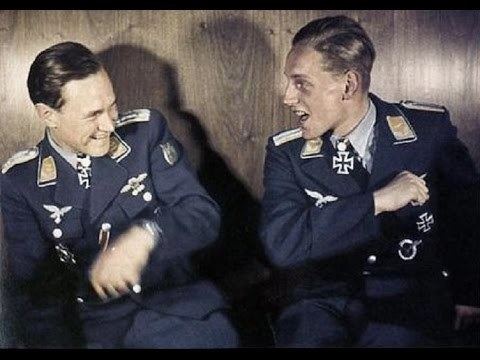
Bos season 2 episode 16 jv44 april 2 1945 hauptmann walter krupinski s training flight
Childhood, education and early career
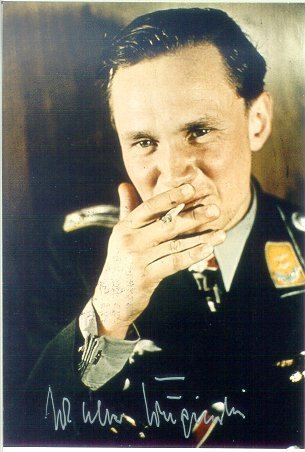
Krupinski was born on 11 November 1920, in the town of Domnau in the Province of East Prussia, and grew up in Braunsberg, present-day Braniewo, Poland. He was the first son of Friedrich Wilhelm Krupinski, a Obergerichtsvollzieher (bailiff), and his wife Auguste, née Helmke. His two younger brothers were Paul and Günther. Paul joined the Kriegsmarine and entered the U-boat service, and was killed in action on 11 November 1944 while serving on U-771 as an Oberleutnant zur See (first lieutenant), which was sunk off the Norwegian coast by the British submarine HMS Venturer.
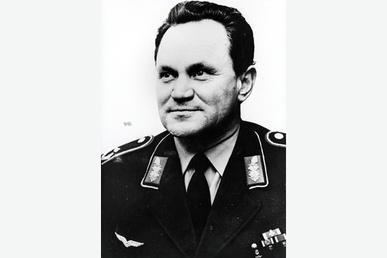
Krupinski entered the Luftwaffe in September 1939 as an ensign. From November 1939 to October 1940, Krupinski entered basic air training and, after being assigned as a fighter pilot, the fighter school. Following two weeks of vacation, Krupinski completed his training at Jagdfliegerschule 5 (5th fighter pilot school) in Wien-Schwechat to which he was posted on 1 July 1940. Jagdfliegerschule 5 at the time was under the command of the World War I flying ace and recipient of the Pour le Mérite Eduard Ritter von Schleich. One of his course mates was Hans-Joachim Marseille, who had been posted to the Jagdfliegerschule 5 in late 1939 but had not yet graduated out of disciplinary reasons. His three-roommates at the school were Walter Nowotny, Paul Galland, the brother of Adolf Galland, and Peter Göring, a nephew of the Reichsmarschall (Empire Marshal) Hermann Göring.
World War II
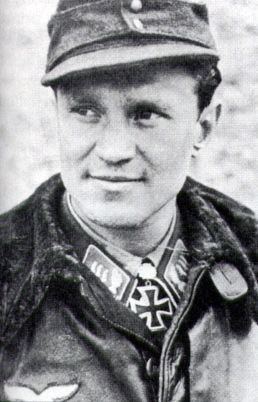
After completing his flight training at Jagdfliegerschule 5 Krupinski was sent to Ergänzungsjagdgruppe Merseburg on 1 October 1940. He then joined his new unit Jagdgeschwader 52 (JG 52—52nd Fighter Wing), where he was placed in 6. Staffel in February 1941. 6. Staffel at the time was under the command of Staffelkapitän (squadron leader) Rudolf Resch. Resch later gave Krupinski the nickname "Graf Punski" ("Count Punski") or sometimes just "Der Graf" ("The Count"). The nickname had its origins in a late-night conversation between Krupinski and Resch. His father was a professor of Slavic studies in Dresden. When Krupinski tried to explain his East Prussian origin, Resch informed him that the ending in "-ski" or "-zky" denoted a landowner, or that it indicated a Freiherr ("free lord"), and thus the lowest level in the medieval nobal hierarchy in the East. The witty banter which then followed, led at first in his squadron, then in his group and eventually in the entire German fighter force to his nickname which stuck with for the rest of his life.
Eastern Front

Krupinski won his first aerial victory during Operation Barbarossa. On 16 August 1941 at 05:48, he claimed a Polikarpov I-16. Krupinski followed this up with a Ilyushin DB-3 on 17 September 1941. His fourth victory came on the 4 October over a Tupolev SB near Kholm.
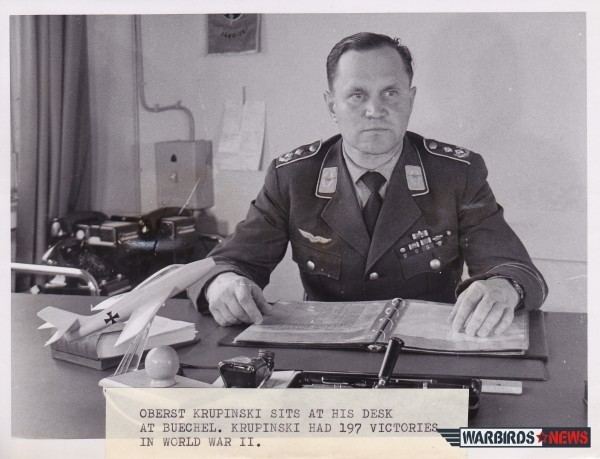
In the summer, 1942, 6./JG 52 was supporting Army Group South on the front over the Caucasus. Opposing it was the 4th and 5th Air Armies of the Red Air Force. On 25 October 1942 Krupinski claimed his 53rd victory but was then rammed by an I-16. The Soviet pilot was killed. Four days later Krupinski received the Knight's Cross of the Iron Cross.
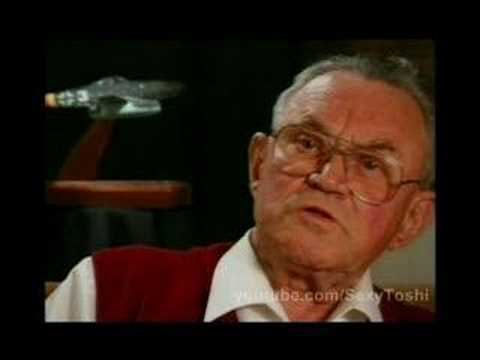
By August 1942 at 50, for which he was awarded the German Cross in Gold (Deutsches Kreuz in Gold).
After another six victories Krupinski was awarded the Knight's Cross of the Iron Cross (Ritterkreuz des Eisernes Kreuzes). On 2 March 1943, Krupinski was promoted to Staffelkapitän (squadron leader) and was given command of 7. Staffel. At this time Erich Hartmann, who went on to become the highest scoring Ace of the war, served as his wingman. Hartmann adopted Krupinki's close-quarters method of attack. On 18 August 1943, Krupinski was credited with his 100th aerial victory. He was the 51st Luftwaffe pilot to achieve the century mark.
Oak Leaves to the Knight's Cross
Krupinski was awarded the Knight's Cross of the Iron Cross with Oak Leaves (Ritterkreuz des Eisernes Kreuzes mit Eichenlaub) for his 174th victory.
Both Krupinski and Hartmann were ordered to the Reichsluftfahrtministerium (Ministry of Aviation) in Berlin for the Oak Leaves presentation. Both arrived in Berlin on 23 March 1944 only to learn that the presentation would be made at the Führerhauptquartier (Führer Headquarter). They were instructed to go the Anhalter Bahnhof where they would take an overnight train to the Führerhauptquartier. Here they met fellow JG 52 pilots Gerhard Barkhorn, who was to receive the Swords to his Knight's Cross, and Johannes Wiese. Also present were Kurt Bühligen, Horst Ademeit, Reinhard Seiler, Hans-Joachim Jabs, Dr. Maximilian Otte, Bernhard Jope and Hansgeorg Bätcher from the bomber force, and the Flak officer Fritz Petersen, all destined to receive the Oak Leaves. Krupinski assumed that they were heading for the Wolf's Lair in East Prussia but the train was heading for the Berghof in Berchtesgaden. On the train, all of them got drunk on cognac and champagne. Supporting each other and unable to stand, they arrived at Berchtesgaden. Major Nicolaus von Below, Hitler's Luftwaffe adjutant, was shocked. After some sobering up, they were still intoxicated. Hartmann took a German officer's hat from a stand and put it on, but it was too large. Von Below became upset, told Hartmann it was Hitler's and ordered him to put it back.
Defense of the Reich
After achieving 177 victories, Krupinski was transferred from the Eastern Front to Germany, where he was assigned to 1. Staffel of Jagdgeschwader 5 (JG 5—5th Fighter Wing). Promoted to the rank of Hauptmann (captain) in May 1944, Krupinski was made commander of II. Gruppe of Jagdgeschwader 11 (JG 11—11th Fighter Wing). After the Allied invasion of France in June 1944, the Gruppe was rushed to Normandy to operate on low-level Army support missions. Krupinski claimed 10 Allied aircraft shot down before he was wounded and burned on 12 August. By September he was transferred as Commanding Officer of III. Gruppe, Jagdgeschwader 26 (JG 26—26th Fighter Wing). In March 1945, Krupinski was transferred to the aces unit Jagdverband 44, which flew the Messerschmitt 262 jet, claiming his last two aerial victories of the war on 16 and 26 April 1945.
At 3:00 pm on 24 April 1945, Krupinski was one of four pilots to take off from Munich-Riem to intercept a United States Army Air Forces (USAAF) B-26 Marauder aircraft formation. Günther Lützow, who failed to return from this mission, led the flight of four. Lützow's fate remains unknown to this date.
After having claimed 197 enemy planes (177 Eastern Front, 20 against the Western Allies, in about 1100 missions), Krupinski went into American captivity on 5 May 1945. He was held in US custody at Salzburg, Aibling, Heilbronn, Heidelberg, in England, France, Munich-Oberföhring and Tegernsee before being released on 26 September 1945. Krupinski had bailed out four times and had been wounded five times.
Gehlen Organization
The former General Reinhard Gehlen had offered his services to the Americans in the end of 1945. Gehlen had served as chief of Fremde Heere Ost (FHO), the German Army's military intelligence unit on the Eastern Front. The Gehlen Organization was in need for people who were familiar with the air war. Krupinski was hired and helped gather information about the armed forces in the Soviet occupation zone until 1953. There are many conflicting or missing bits of information about this stage of Krupinski's life. He had done little to lift this veil of uncertainty.
Bundeswehr
Krupinski entered the Amt Blank (Blank Agency), named after Theodor Blank, the forerunner of the German Federal Ministry of Defense on 15 December 1952. Given the rank of major in 1957, Krupinski went to lead Jagdbombergeschwader 33 (JaBoG 33—Fighter-Bomber Wing 33) the first postwar German jet fighter wing. In 1966 Krupinski took command of the German forces of the Luftwaffen-Ausbildungs-Kommando in Fort Bliss, Texas with the rank of brigadier general. In July 1969 Krupinski became commander of the 3rd Luftwaffe division. In 1971 he became chief of staff of Second Allied Tactical Air Force. In October 1974 Krupinski was promoted commanding officer of the airfleet. Due to the Rudel Scandal he was forced into early retirement on 8 November 1976 holding the rank of Generalleutnant (lieutenant-general). Krupinski died in Neunkirchen-Seelscheid in 2000.
